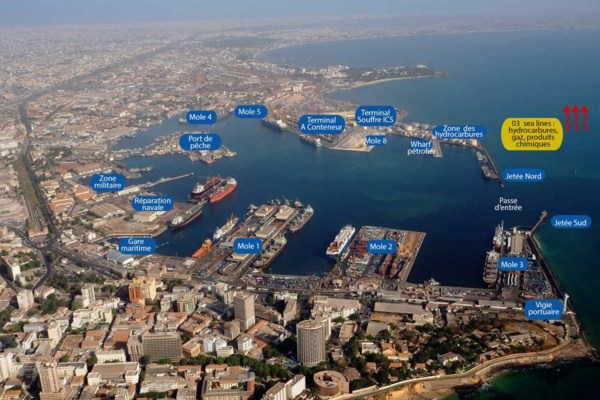Senegal plans to acquire two new ports (Ndayane and Sendou) to replace the Autonomous Port of Dakar, almost suffocated by the volume of traffic and left behind by the ports of Lome, Lagos, Tema and Abidjan.
Thus, the port of Ndayane (50 km south of Dakar), devolved to DP Word, will start in 2019 for an investment estimated at $ 2 billion as part of an innovative PPP. “We are finalizing the agreements with the strategic partners for the construction of the port of Ndayane which, in its first phase (2019 and 2020), will require more than 500 billion FCFA (926 million dollars),” Ababacar said. Sadikh Bèye, General Manager of the Autonomous Port of Dakar (PAD), on December 8th, at the Dakar Fair (CICES).
Designed on 1,800 hectares, the future port will be backed by a special economic zone called to be the largest in the country. The draft of the port of Ndayane will be 20 m, which will be well worth the description of “Port in deep water” alongside Lomé and Kiribi.
As for the port of Sendou and its 500 hectares of land base, it is developed by Dam Diané (Senegal Minergy Port), a private actor who made a fortune in the textile industry and then in the United States. With an investment of CFAF 500 billion over a 25-year concession, the ore and bulk port will be delivered by 2021 without funding or state guarantee, but with the support of one of the largest US groups in the field of hydrocarbons.
Already, the hydrocarbons part is taking shape, said Financial Afrik, who visited the site, on October 20, at the meeting of the developer and stakeholders.
The Moroccan Afriquia and the Swiss Addax have already positioned themselves on the construction of storage centers. It is the same Senegalese Itoc, engaged in a butane storage center. The ICS (Chemical Industries of Senegal) meanwhile they plan to connect the port by their own rails to be able to route their exports.
The pier will be delivered in 13 months by MGE, owner of TSE, engaged in the metal part of the Regional Express Train (TER). In the long term, the port will reach a draft of 15 m for a linear platform of 280 meters.
With these two books, Senegal hopes to return to the port chessboard of the African Atlantic coast. A battle will also be played in a global framework on connectivity, the state of road and rail infrastructure and the fluidity of port procedures.



